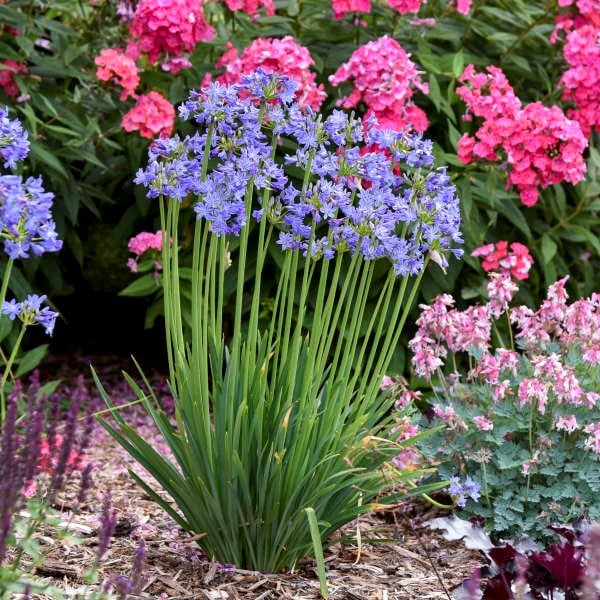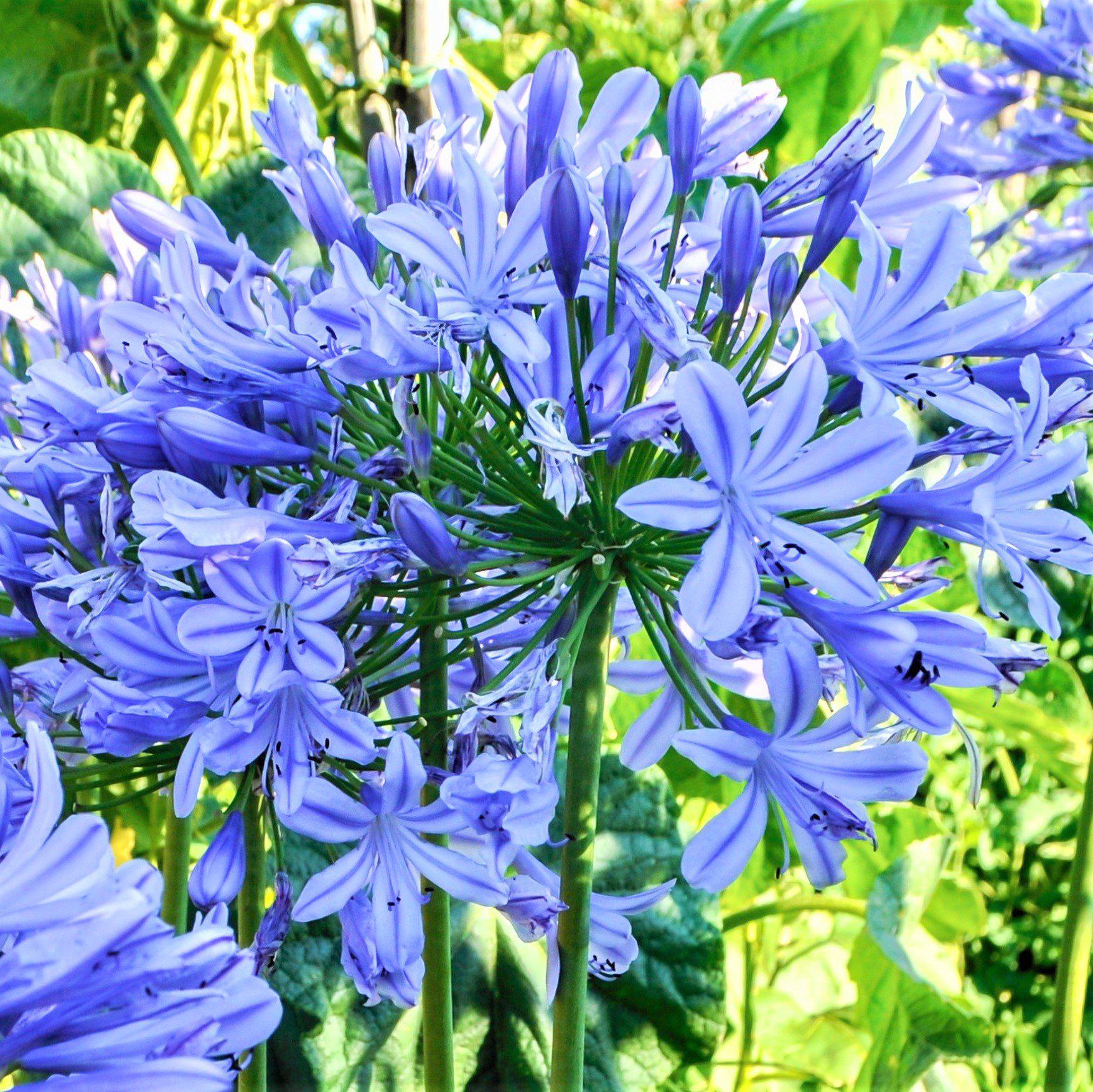Grasping the Art of Agapanthus Treatment: Necessary Steps for Healthy Development and Vivid Flowers
In the world of cultivation, the farming of agapanthus stands as a gratifying undertaking for those that look for to nurture these elegant flowering plants. With their striking flowers and elegant vegetation, agapanthus has caught the attention of garden enthusiasts worldwide. However, attaining optimum growth and vibrant blooms calls for a nuanced strategy that incorporates numerous crucial steps. From selecting the best variety to understanding pruning methods, the journey towards cultivating prospering agapanthus plants is complex and holds the key to unlocking the full possibility of these botanical treasures.

Choosing the Right Agapanthus Selection

When choosing the appropriate Agapanthus selection for your garden, take into consideration factors such as environment viability, flower shade, and development behavior. Agapanthus, typically recognized as Lily of the Nile or African lily, comes in a range of shades varying from tones of blue and purple to white. Choose a flower color that enhances your existing garden palette to develop a harmonious landscape. Additionally, think about the climate in your region to guarantee the Agapanthus variety you choose can grow in your details problems. Some ranges are extra tolerant of chilly temperatures, while others prefer warmer climates. Understanding the growth practice of various Agapanthus ranges is crucial for proper placement within your yard. Some ranges have a clumping development behavior, suitable for boundaries or containers, while others have a more spreading nature, suitable for ground cover or mass plantings. By meticulously examining these factors, you can pick the perfect Agapanthus selection to enhance the charm of your garden.
Suitable Planting Conditions
Taking into consideration the optimum environmental requirements is important for effective Agapanthus farming. Agapanthus plants are delicate to chilly temperature levels and need to be safeguarded from frost during winter season months.
To guarantee healthy and balanced development and vivid flowers, plant Agapanthus light bulbs at a depth of about 2-4 inches and space them 8-12 inches apart. Adding natural issue, such as garden compost, to the dirt can enhance drain and fertility, promoting durable root growth. Mulching around the base of the plants aids retain moisture and subdues weed growth. Regular watering is critical, particularly throughout the expanding period, to keep the dirt continually moist yet not saturated.
Watering and Feeding Tips
Preserving proper wetness degrees and giving crucial nutrients are vital elements in the care program for Agapanthus plants. When it comes to watering Agapanthus, it is essential to strike an equilibrium. These plants choose consistently damp dirt however are prone to root rot if overwatered.
Fertilizing Agapanthus is necessary for advertising healthy development and prolific blooms. Use a well balanced plant food, such as a 10-10-10 formula, in the early springtime as new development arises. Repeat this application every 6-8 weeks throughout the expanding period. Prevent extreme fertilization, as it can bring about lush vegetation at the cost of blooms. Always comply with the maker's instructions for appropriate dilution and application techniques. By following these watering and feeding pointers, you can ensure your Agapanthus plants prosper and produce dynamic, resilient blooms.
Pruning Strategies for Agapanthus
Pruning Agapanthus plants at the ideal times and with correct methods is vital for maintaining their health and wellness and advertising ideal development and blooming. The ideal time to prune Agapanthus is in late winter or very early springtime before brand-new growth emerges.
Deadheading invested blossoms can also redirect the plant's energy into generating even more blooms instead than establishing seeds. If you want to gather seeds for propagation, leave some blossoms to fully grown and dry on the plant.
Keep in mind to use tidy, sharp tools to make precise cuts and decrease the danger of introducing diseases. Agapanthus. Regular pruning will aid maintain your Agapanthus looking cool and healthy and balanced while guaranteeing a plentiful display of beautiful blooms
Managing Usual Pests and Illness
After guaranteeing appropriate pruning strategies for Agapanthus, it is necessary to attend to common bugs and illness that can influence the health and wellness and vigor of these plants. One common pest that influences Agapanthus is the Agapanthus gall midge.
An additional common issue is fungal leaf place, which presents as dark sores on the fallen leaves. To stop fungal diseases, make sure good air blood circulation around the plants, prevent above watering, and remove any infected fallen leaves without delay. Additionally, Agapanthus plants can struggle with root rot if they are planted in badly draining pipes soil. To stop this, plant Agapanthus in well-draining soil and avoid overwatering. By being attentive and taking prompt action against insects and diseases, you can aid your Agapanthus plants thrive and produce dynamic blossoms.

Conclusion
Finally, understanding the art of agapanthus care involves selecting the best variety, supplying ideal planting conditions, appropriate watering check my source and fertilizing, ideal pruning strategies, and addressing common insects and illness. By complying with these crucial actions, you can make sure healthy development and vivid blossoms for your agapanthus plants. Keep in mind to frequently monitor and maintain your plants to promote their overall wellness and durability.
To guarantee healthy and balanced development and dynamic blossoms, plant Agapanthus bulbs at a depth of regarding 2-4 inches and room them 8-12 inches apart. By complying with these watering and feeding ideas, you can guarantee your Agapanthus plants grow and create dynamic, lasting blooms.
One typical parasite that affects Agapanthus is the Agapanthus gall click reference midget. Furthermore, Agapanthus plants can endure from root rot if they are grown in poorly draining soil. By adhering to these vital steps, you can ensure healthy and balanced growth and dynamic have a peek here blossoms for your agapanthus plants.
Comments on “Magnificent Agapanthus: Enhancing Your Yard's Elegance”